By Woody Blue
Note to readers from XX Amazons: XX Amazons welcomes your comments about all our blogs. We also welcome comments about the “Can I Get a Witness” event, including discussion about any of the speaker’s presentations and your thoughts about the inclusion in the conference of right wing speakers. XX Amazons values discussion of difficult or controversial topics that are of importance to radical feminists.
Aug 8, 2020.
I attended the Zoom conference, “Can I Get a Witness”, a conference devoted to opening up the discussion about the trans movement with those who have studied various aspects about it and have tried to speak out against it. Mostly they were met with backlash, deplatforming and other forms of silencing.
The conference tapped into many aspects of the trans movement and the interviews I listened to were primarily from people in UK or US; others were from Brazil, Canada, Sweden and Australia.
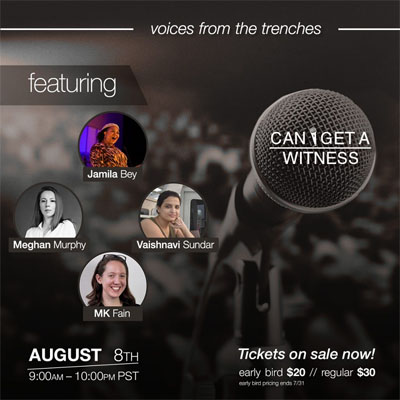 I tried to take notes on every speaker. The conference was 13 hours long and had 28 speakers, with an occasional video or song between speakers. At times my computer acted up or I had to take a small bathroom or food break and so some things were missed.
I tried to take notes on every speaker. The conference was 13 hours long and had 28 speakers, with an occasional video or song between speakers. At times my computer acted up or I had to take a small bathroom or food break and so some things were missed.
In typing up my notes, I looked up the webpages of the various speakers to get a better handle on who they were and how or why they were involved with these issues. I invite you to visit the websites of any of the people here if you want to investigate further.
Joey Brite, a butch lesbian and organizer of the conference, has been watching the trans community decimate her own lesbian world. There is an interview with her on the Women Are Human website. In that interview she states,
“I would like people reading this to understand that this is a secular, self-financed enterprise. This is important. Women who have gone before this event and continue to have fantastic sessions online are constantly getting accused of taking money from right-wing organizations. I’m working class, and I’ve scraped everything I can together to make this happen. It’s taken me more than a year and a half.”
Continue reading “Can I Get A Witness”: Interview with Organizer of Virtual Event on Gender Non-Conformity That Has Social Media Abuzz here.
For a list of speakers and the schedule, go here. The organizers state that in a few months they will have the recorded sessions available for purchase for a small fee.
Can I Get a Witness: Speakers and Notes
By Woody Blue, with help from Sally Tatnall, 8/11/2020
In order of appearance:
1. Abigail Shrier, author of the book “Irreversible Damage: the Transgender Craze Seducing Our Daughters.” She gave a short introduction of herself and why she wrote the book. She found that no one was willing to publish information, whether an article or book, that criticized the trans movement. This is why there is such little info in mainstream written media.
 2. Sasha Ayad, a therapist for teens and their families specializing in ROGD (Rapid Onset Gender Dysphoria). She was very informative and gave statistics concerning the rapid rise of ROGD in the last few years. She referenced Lisa Littman’s experiences and studies a few times. Lisa Littman is a researcher from Brown University who ran into a lot of trouble when she tried to publish her findings on ROGD. She stated that 30% of transitioning children are autistic.
2. Sasha Ayad, a therapist for teens and their families specializing in ROGD (Rapid Onset Gender Dysphoria). She was very informative and gave statistics concerning the rapid rise of ROGD in the last few years. She referenced Lisa Littman’s experiences and studies a few times. Lisa Littman is a researcher from Brown University who ran into a lot of trouble when she tried to publish her findings on ROGD. She stated that 30% of transitioning children are autistic.
Authenticity seems to come from body sculpture. Using the term “assigned at birth” removes it from biological reality.
3. Jennifer Bilek, author of “The 11th Hour” blog. She has been following the money that supports the trans movement. All the money flows through the Arcus Foundation. There are a few philanthropic billionaires that throw money into the trans movement. The money going into the movement increased in 2014. They work at deconstructing sex by normalizing trans and body dissociation. They claim that sex, (not gender) is on a spectrum using the intersex community as proof. It is social manipulation by the elite.
Jennifer stated that the trans movement is driven by the IT industry. Transhumanism is the result which is basically the concept that technology has the ability to modify bodies. If we aren’t connected to our bodies, we can reduce them to body parts. Thereby a womb can be transplanted, a penis can be built, mothers can have beards, never covering the harms.
The trans movement provides the people and the advertising to promote these concepts. Hollywood is heavily involved as the movie industry glamorizes actors who change gender, and fashion magazines put them on covers. Now it’s fun and cool to be disconnected from your body.
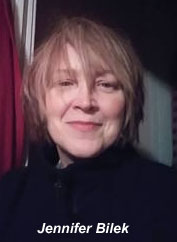 Jennifer Bilek spoke of the colonizing and commodifying of women. Sex trafficking, prostitution and porn are major players to promote fetishes.
Jennifer Bilek spoke of the colonizing and commodifying of women. Sex trafficking, prostitution and porn are major players to promote fetishes.
She says the movement is mainly led by autogynes. A women’s body is the object and without women’s biology, trans doesn’t exist. The trans movement unmoors us from our sex, which is where the transhumanism ideology is taking us.
Many of the later speakers referenced Jennifer Bilek and stated that she had compiled and researched this topic extensively. She is highly regarded.
4. Jane Wheeler, President of ReIME, an acronym for ReThink Identity Medicine, a non-profit research and education organization dedicated to improving and optimizing ethical long term care and treatment for gender variant children, adolescents and youth.
She talked about the rising numbers of teens being referred to clinics dealing with gender. The average age is 14 years old. At this point, 2% of High school students identify as trans.
She explained that the medical world has changed drastically in the past several years due to its monetary value, which is now $3.6 trillion dollars in the US, 20% of the GNP. Some of the ways it has changed is with the advent of patient’s rights, disease advocacy, direct marketing, treatment chat rooms, and over 10,000 advocacy groups. Gate-keeping has been minimized and it has become patient-centered, meaning patients can shop for drugs, treatments, doctors.
These changes are available to adults and minors. The age of consent is between 14 – 16 years old. Marketing to minors has increased. Used to be $100 million annually, now it’s billions.
They are selling gender in very restrictive terms. Democrats are out of sync with this because they want the LGBT’s on their side.
She had more to say but my notes aren’t clear.
 5. Kara Dansky, lawyer for WoLF. I don’t have much written down, but I recall that she talked about some of the court cases that have happened in the past and a few that are ongoing now. She was asked about the Religious Right in the Q&A, and she didn’t promote their agenda but stated that they have their own reasons for making this their issue. She said there is no support on the Left at all.
5. Kara Dansky, lawyer for WoLF. I don’t have much written down, but I recall that she talked about some of the court cases that have happened in the past and a few that are ongoing now. She was asked about the Religious Right in the Q&A, and she didn’t promote their agenda but stated that they have their own reasons for making this their issue. She said there is no support on the Left at all.
6. Don Smith, concerned citizen. This is a Black man who spent most of his worklife in Great Britain, then moved to Sweden. He is married and has been closely watching the trans movement. He views transgenderism as another arm of Colonization. He described the War Model of Transgenderism as a progression. In this case, the boundaries of this war is gender. First comes Invasion, then Annexation, then Assimilation, Domination and Subjugation. These are the progressive steps when one nation is colonizing another.
He expressed a lot of concern about the colonization of women, explaining that as a Black man, these were the steps to colonize the Blacks when they were stolen from Africa. Trans treat women as commodities, similar to Black slaves being treated as commodities. They aren’t considered fully human, perhaps subhuman. Sex trafficking and prostitution are ways that women are treated as property, rather than humans. When slavery was abolished, a free Black was worth only 3/5 of a White man.
He explained that all colonization works this way throughout history and now the trans are colonizing women. This destroys a woman’s humanity and reduces them to objects which can be fetishized.
When confronted, the trans community resorts to DARVO, an acronym for Deny, Attack, Reverse Victim and Offender. His observations are that the queer community has become a Men’s Rights Activity.
He feels that the way to disrupt the trans movement is to dismantle pornography, as this is the way men are taught. He brought up sissy porn, which shows feminized men. He says that feminized men don’t look at themselves as women and don’t want to be women. He brought up the example of Hula men in prison and told us to look it up as he was running out of time.
Don Smith is happily married and said that understanding more about women’s issues and the ways they are treated has helped him become a better husband. He feels it’s extremely important to take down the trans movement before it takes down women.
7. Dr. Quentin Van Meter, pediatric endocrinologist. President of the American College of Pediatricians. Dr. Van Meter has spoken out about the danger of puberty blockers. He has been working with children of puberty age for many years and says that puberty is a time when the body starts changing into its reproductive role. This can be frightening but after a year or so, things settle down and the child adapts to the changes. Puberty is not something that should be blocked, as it prevents the person from maturing. 98% of children who are put on puberty blockers go on to enter the trans world and become infertile because their bodies can no longer mature.
He said that gender is a state of mind. There is absolutely no test of any kind that will determine gender.
He told us that doctors who know better don’t speak out because of fear of losing their jobs, reputations and being bullied. He practices in Atlanta, Ga.
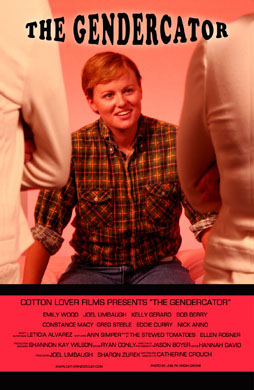 8. Catherine Crouch, lesbian filmmaker. In 2007, Ms. Crouch made a movie called “The Gendercator.” It was a story about a lesbian who had an accident and woke from a coma many years later. When she woke up, she was informed that the society had changed and sexual relations could only be between a man and a woman. Butch lesbians were operated on and given hormones to make them men. They could choose to be a man or a woman but they had to sexually be with a member of the opposite sex. The purpose behind the film was to point out what an evangelical world would be in regards to lesbians.
8. Catherine Crouch, lesbian filmmaker. In 2007, Ms. Crouch made a movie called “The Gendercator.” It was a story about a lesbian who had an accident and woke from a coma many years later. When she woke up, she was informed that the society had changed and sexual relations could only be between a man and a woman. Butch lesbians were operated on and given hormones to make them men. They could choose to be a man or a woman but they had to sexually be with a member of the opposite sex. The purpose behind the film was to point out what an evangelical world would be in regards to lesbians.
Her film was shown in 3 or 4 film festivals. It was accepted in the LA G&L film festival, but the day before it was supposed to be shown, the producers called her and said they had to cancel the show because much objection about it had been raised. It became a huge issue, with some lesbians picketing about the right to show it and others wanting to ban it.
It ended up being shown and Ms. Crouch had to defend her position. Her position was really about having a good discussion about evangelicals, sex stereotypes and body/mind control. She sat on forums and panels with other directors and was harshly criticized by audience members. As the film traveled, the controversy became stronger.
It was the end of her career. She wasn’t able to get funding or grants to make films again. We saw parts of her movie and she now lives in SF. She is soft-spoken and open minded and feels the role of the moviemaker is to explore issues. Her movie, “The Gendercator” is available on DVD.
 9. Vaishnavi Sundar, filmmaker. This filmmaker is from India and is a feminist. She is well-known but received a lot of backlash. Her sin was that she tweeted that “men shouldn’t be in women’s sports.” She talked about the trans movement in Indian society and the way women are dominated. She is basically making a documentary underground called “Not My Cup of ‘T’.” She showed us the first part which is a talking heads film with doctors, activists, lawyers, etc, talking about the trans movement. She hopes to circulate this movie in various countries to raise awareness.
9. Vaishnavi Sundar, filmmaker. This filmmaker is from India and is a feminist. She is well-known but received a lot of backlash. Her sin was that she tweeted that “men shouldn’t be in women’s sports.” She talked about the trans movement in Indian society and the way women are dominated. She is basically making a documentary underground called “Not My Cup of ‘T’.” She showed us the first part which is a talking heads film with doctors, activists, lawyers, etc, talking about the trans movement. She hopes to circulate this movie in various countries to raise awareness.
10. Stephanie Davies-Arai (Transgender Trend) and Julia Long (lesbian feminist activist). This was a conversation to explore the use of language in the trans movement. My computer was acting up and I couldn’t follow the conversation too well, but the gist of it was that we should not be calling people trans. Instead a “transwoman” should be called a man or male when describing them. Because males cannot be female, it would be better to not say “transwoman” if the truth is he’s a male.
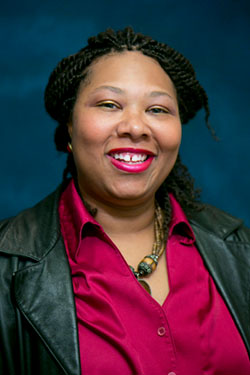 11. Jamila Bey, African American journalist and hosts a weekly radio show called “Sex, Politics and Religion: SPAR with Jamila. She explained that the US doesn’t have a centralized medical system and so it’s hard to get national statistics. The UK has socialized medicine and they document statistics nationally so it’s possible to gather and analyze the medical trends.
11. Jamila Bey, African American journalist and hosts a weekly radio show called “Sex, Politics and Religion: SPAR with Jamila. She explained that the US doesn’t have a centralized medical system and so it’s hard to get national statistics. The UK has socialized medicine and they document statistics nationally so it’s possible to gather and analyze the medical trends.
As a Black woman she asks, “Isn’t sterilizing a child wrong?” She is told not to ask such questions. That was her experience whenever she was looking for info. Either answers were not there or she was told, “Don’t Ask.” We are being asked to deny reality. This is a dangerous thing to be learning. It’s also going along with the idea that anti-intellectual and anti-science is good.
12. Sydney Wright, detransitioner. Sydney is a young woman and transitioned while a teen. She started to detransition in her early twenties and feels she was pushed into claiming trans. She realized after surgeries and hormones that it didn’t make her feel better about herself but she had made everyone accept her as the opposite sex for years. She had to swallow her pride to admit that she had been wrong and that was difficult. She would like to work with teens to help those with body dysphoria and tell them not to rush into transitioning. She tried to sue but couldn’t find a lawyer who would take her case pro bono and not be afraid to take the case.
13. Eugenia Rodriguez, founder of No Corpo Certo (Brazilian Campaign Against Transing Kids). I don’t have any notes on her. My reception was poor and it was hard to understand what she was saying so I took a short break.
14. JD Ghassan Robertson, Award-winning Author and Senior Editor at The Velvet Chronicle. Julia had many observations about the way butch and femme lesbians are used in the media. Mostly lesbians don’t play lesbians even in shows like The L Word. She points to Lea Delaria in “Orange is the New Black” as the only butch lesbian on mainstream TV that she knows of.
As an author, her experience is “if you don’t believe in gender ideology, you can’t participate in the culture.” Lesbians are excluded in the name of inclusion and PIV (penis in vagina) sex is called lesbian sex. Old, dead butches are being identified as trans. She loudly says, “NO, THEY ARE NOT.”
Writing about trans issues in mainstream media has to be underground.
15. Diana Shaw, Women Are Human. This website focuses on criminalization and politics of the trans movement. 50% of “transwomen” are heterosexual. A large majority are sex offenders. There is a history of them using women’s public toilets.
The Trans movement has tied itself to the Black movement. In reality, Black women are the most heavily raped, sex trafficked, have the highest teen pregnancy and have the highest poverty rate. Black “transwomen” claim all this also, even though they are male. Lowered testosterone levels in men are still higher than those in women.
She relayed a story about a Black “transwoman” making up (fetishizing) stories of violence against himself because he wanted it to happen to him (in his fantasy). The root of the issue is that “transwomen” view women as a collection of parts rather than a whole human being.

16. Mary Kate Fain, creator of Spinster.xyz, a women-centric social media platform to promote safe space for women to discuss issues. Mary Kate explained that there are very few platforms on the Internet that are focused on women and are safe. She mentioned Fair Play for Women, which is centered on the rights of women in the UK, posting news in politics and other venues. She also mentioned Ovarit, which promotes discussions among women.
I don’t understand much of how social media works, but Mary Kate Fain explained that the IT industry is mainly designed and staffed by men. The Internet tech culture is hostile to women and includes a LOT of porn. Mary Kate has had to fend off attacks on her platform to keep control of content. She explained the term “incel,” short for INvoluntary CELibate, which is a dark, twisted form of internalized misogyny. The majority of incels are those in the IT tech industry whose entire life is sitting behind a computer screen, saturated with porn images. It instills rage in young males, who insist that women are at the bottom of all the insults and lack of sex they get. They spout a lot of violence against women and make the Internet hostile to women.
17. The DeProgrammer, Exposing and connecting the dots…transgender, pedophilia, transhumanism. The producer of these YouTube videos hid her face behind a black stripe in order to protect her identity. The videos are stark graphic images with an overlying narrative to explain the mechanisms, strategies, history and people behind the pedophile/transgender/transhumanism movement. The videos are shocking exposès of the dark elements that influence us through media. They describe the evolution of the porn industry, the sex trafficking world, the child molester ways of thinking and acting.
These videos have been banned from Twitter and Instagram, but the person behind these videos is a young feminist who is adept in graphic arts. Not for the light of heart. Very compelling.
18. Thistle Petterson, radio podcast host. WLRN. Women’s Liberation Radio News. Thistle got her start several years ago by signing up to be a guest host for an hour for WORT, a progressive radio station in Madison, Wisconsin. In that hour, she interviewed Sheila Jeffries. She received a lot of backlash but also caught the ear of feminists. Long story short, she and a group of women created weekly podcasts which have aired once a week for the past few years. The collective is committed to reporting news and conducting interviews for women and by women. They operate with a very small budget and have matured as a group. They are going strong.
 19. Beth Stelzer and Linda Blade, Save Women’s Sports. These two women teamed up to fight trans inclusion into women’s sports. Beth Stelzer lives in Idaho and is an amateur weightlifter and mother. Idaho passed a Fairness in Women’s Sports Act to protect women’s sports. Immediately a call was put out to boycott Idaho. She created the website Save Women Sports to reach out to NCAA (National College Athletic Association) athletes to voice their opinion by signing a letter to not give in to bullying tactics. Over 300 athletes signed including Olympic superstars and Champions. This was then forwarded to the Idaho Legislature to hold their ground.
19. Beth Stelzer and Linda Blade, Save Women’s Sports. These two women teamed up to fight trans inclusion into women’s sports. Beth Stelzer lives in Idaho and is an amateur weightlifter and mother. Idaho passed a Fairness in Women’s Sports Act to protect women’s sports. Immediately a call was put out to boycott Idaho. She created the website Save Women Sports to reach out to NCAA (National College Athletic Association) athletes to voice their opinion by signing a letter to not give in to bullying tactics. Over 300 athletes signed including Olympic superstars and Champions. This was then forwarded to the Idaho Legislature to hold their ground.
Linda Blade lives in Canada and is part of the coalition that works with Save Our Sports. They have drafted a petition to send to the Olympic Committee to address their policy allowing males to participate in female sports because of their identity. Their goal is 25,000 signatures and they are halfway there. They would like you to visit their webpage and sign the petition as well as forward the petition to others.
20. Meghan Murphy, author of Feminist Current. Meghan is a Canadian journalist who has been permanently banned from Twitter and other social platforms. She is outspoken and critical about 3rd Wave Feminism, sex politics, transgenderism, female exploitation and censorship. She spoke about Free Speech. She warned us to recognize how quickly we have lost ground because we don’t pay attention. We must remember the work done previously and galvanize energy again.
21. Lynn Meagher, “Compassion Coalition”. Lynn is mother of 2 transgendered children. She created a support network of mothers who have lost their children to transgender movement. Her talk was very emotional and heartfelt. She says she will never let go of her children because that’s what mothers do.
22. Hacsi Horvath, male detransitioner and epidemiologist. Horvath transitioned when he was older and lived his life as a woman for 13 years. He spoke about the validity of the studies that support transgenderism. He is a Cochrane medical reviewer, specializing in epidemiological studies. This means that he has the highest ranking in reviewing scientific medical papers.
Horvath retold the story of “The Emperor New Clothes” to make his points. The clothes were stitched by the finest craftsmen of many nations. The various craftsmen used the finest materials of high quality and spent many months to create the garment. They presented it to the Emperor and everyone praised it despite the fact that it was invisible.
This is what the studies and testimonies of the trans world amounts to. They don’t hold up to scientific examination but most people don’t look closely at the methodology which is sloppy and inconclusive. There is absolutely no science behind the transgender movement. Nothing.
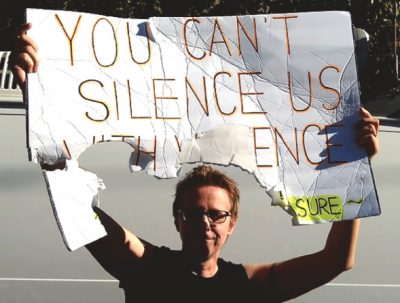 23. Sherri Golden, SF Dyke March, 2019. Sherri joined up with a small group of lesbians to march in the dyke march. Their signs said things like “Puberty Blockers Harm Children” and “Lesbians are Female”. During the march they were surrounded by young female transactivists who shouted “Terf” through bullhorns and pushed them down more than once, tearing up their signs. The police did very little to stop the harassment and the group eventually dropped out. They had to have a police escort to the Bart Station to stay safe. All the women were 60 – 75 years old.
23. Sherri Golden, SF Dyke March, 2019. Sherri joined up with a small group of lesbians to march in the dyke march. Their signs said things like “Puberty Blockers Harm Children” and “Lesbians are Female”. During the march they were surrounded by young female transactivists who shouted “Terf” through bullhorns and pushed them down more than once, tearing up their signs. The police did very little to stop the harassment and the group eventually dropped out. They had to have a police escort to the Bart Station to stay safe. All the women were 60 – 75 years old.
24. Donovan Cleckley, gay male academic. I missed much of his talk but the gist of it is that he agrees that women are being erased. He would like to see more men speaking out about it.
25. Courtney Catearth, midwife from Womb Room, a FB page. Courtney described the stealthy way the trans movement infiltrated the midwifery conferences and associations. The language of birth has been changed so that mothers are ‘parents’ or ‘pregnant people,’ breasts are ‘chests’ and “men can give birth”. Women are oral people and our language is very important to us. Changing language is an anti-female stance. She identifies as a witch and explained that midwifery and female medicine is really the purview of female witches and herbalists.
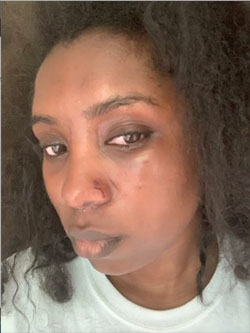 26. Alicia Strada, young Black feminist. Alicia was beaten up about a month ago by female transactivists. A male friend of Alicia’s had transitioned and had asked Alicia to use the ‘correct’ pronouns. Alicia is relatively new to feminism and she refused and told him he was still a male. The hostilities escalated and the “transwoman” wanted to physically fight with her, but Alicia said she didn’t fight men.
26. Alicia Strada, young Black feminist. Alicia was beaten up about a month ago by female transactivists. A male friend of Alicia’s had transitioned and had asked Alicia to use the ‘correct’ pronouns. Alicia is relatively new to feminism and she refused and told him he was still a male. The hostilities escalated and the “transwoman” wanted to physically fight with her, but Alicia said she didn’t fight men.
The “transwoman” sent 3 transactivists to beat her up. She was in the middle of moving from her apartment when they attacked. Fortunately her family was there and was able to intervene, but Alicia walked away with a busted lip, a black eye and several bruises. The story is unusual because all of the participants were Black.
It was hard to listen to this story because Alicia says she no longer trusts anybody, doesn’t look at Twitter or social media anymore and is afraid to go outside her apartment. She is traumatized and still recovering physically from the attack.
27. Sam Reiger, The Terf Exhibit. FB page. The FB page was started as a way to respond to a San Francisco Public Library exhibit called “Degenderette Antifa Art”. The exhibit promoted violence against women who spoke out. The library refused to take it down, so the FB page was created to dispel myths and report misogyny from the Trans movement.
Sam had a slide show that showed several steps to creating a dialogue with someone on the other side. It started With “Listen” and “Find Common Ground” and followed through to the end step which was “It is OK to disengage.” The presentation was aimed at trying to be productive in discussion rather than destructive.
28. Tara, female detransitioner. This was a short video. Tara is 23 years old and would like to sue Tavistock (Gender Clinic in UK) that she feels pushed her into transitioning. She has no money to do this. (A former speaker explained that it’s very hard to sue because of the difficulty of finding a lawyer to take it on at the risk of ruining their career. It would also have to have the “right person” to sue, meaning that the plaintiff would have to be willing to put up with lots of harassment, public shaming for years.) Tara was told her life would get better if she transitioned. No other options were offered.
She stopped taking hormones about a year ago and she is dealing with negative health effects. She regrets her decisions and would like to warn other teens.
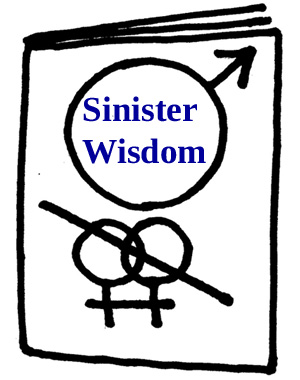 If you are incensed at the takeover of women’s and Lesbian spaces by males claiming to be women, take action by signing this petition. Sinister Wisdom’s recent issue #128 on “Trans/Feminisms” features male (“transgender”) contributors, and includes “written and visual images of dismemberment, penises, graphic male sex acts, objectification of women’s bodies, and derision of radical feminists.” (from the quote by JW in the petition) The XXLA petition pressures Sinister Wisdom to return the journal to an all female, Lesbian-Feminist publication.
If you are incensed at the takeover of women’s and Lesbian spaces by males claiming to be women, take action by signing this petition. Sinister Wisdom’s recent issue #128 on “Trans/Feminisms” features male (“transgender”) contributors, and includes “written and visual images of dismemberment, penises, graphic male sex acts, objectification of women’s bodies, and derision of radical feminists.” (from the quote by JW in the petition) The XXLA petition pressures Sinister Wisdom to return the journal to an all female, Lesbian-Feminist publication.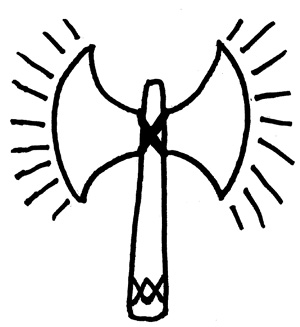 Before resorting to this petition, we wrote to the editor and the board of directors of Sinister Wisdom requesting that they allow us to edit an issue that would focus on gender-critical and Radical-Feminist creative work. Despite the considerable writing, editing, and artistic skills we offered, Sinister Wisdom refused our request for one, gender-critical issue.
Before resorting to this petition, we wrote to the editor and the board of directors of Sinister Wisdom requesting that they allow us to edit an issue that would focus on gender-critical and Radical-Feminist creative work. Despite the considerable writing, editing, and artistic skills we offered, Sinister Wisdom refused our request for one, gender-critical issue. 
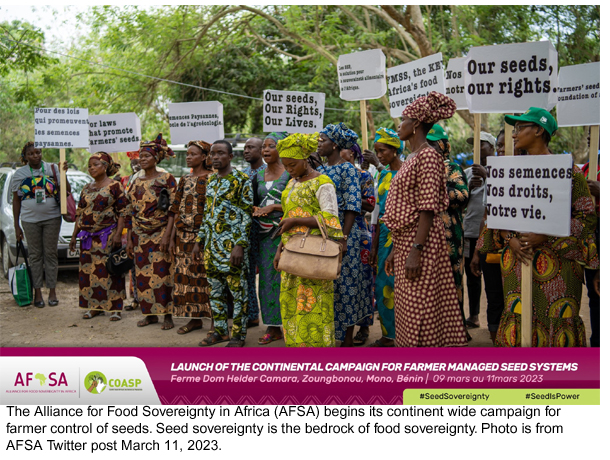
 Putting women at the center of an economy prevents men from taking more than their share of power and ensures a balance between women and men. Woman-centered does not imply woman-dominated. Women in subsistence economies (and elsewhere) generally create caring and sharing relationships that are non-hierarchical.
Putting women at the center of an economy prevents men from taking more than their share of power and ensures a balance between women and men. Woman-centered does not imply woman-dominated. Women in subsistence economies (and elsewhere) generally create caring and sharing relationships that are non-hierarchical.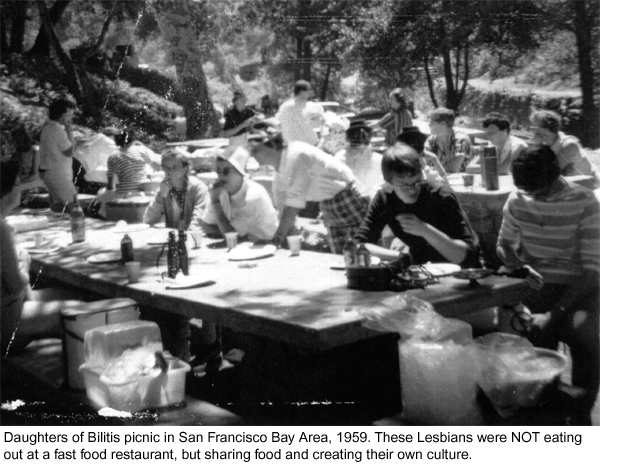
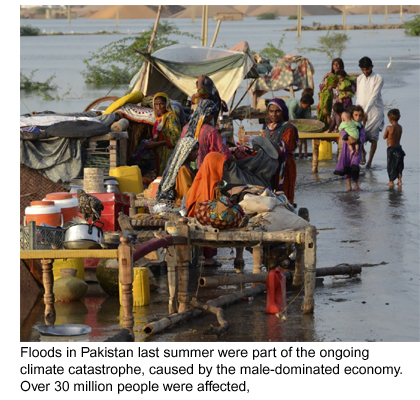 Why not switch to the female-centered economy and scrap the male-dominated one? Clearly, the male-dominated economy that is bringing us climate catastrophe, forced migrations and the Sixth Extinction is far scarier than the subsistence/gift economy that exists only to bring us life. In the global South, people have been fighting to continue their own ways of life, which includes their subsistence economies, since the beginnings of colonization. Choosing to embrace and expand woman-centered economies offers those in the global North another way to step up by moving into an Earth-centered way of life and curtailing support for the economy of destruction.
Why not switch to the female-centered economy and scrap the male-dominated one? Clearly, the male-dominated economy that is bringing us climate catastrophe, forced migrations and the Sixth Extinction is far scarier than the subsistence/gift economy that exists only to bring us life. In the global South, people have been fighting to continue their own ways of life, which includes their subsistence economies, since the beginnings of colonization. Choosing to embrace and expand woman-centered economies offers those in the global North another way to step up by moving into an Earth-centered way of life and curtailing support for the economy of destruction.
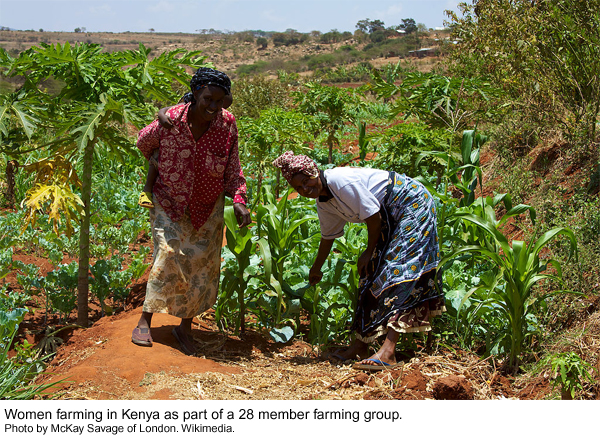
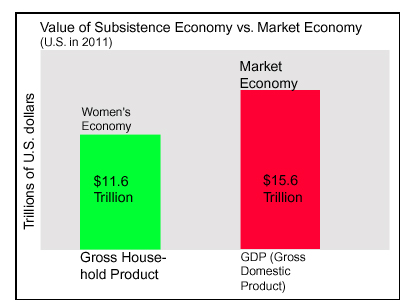 It is important to understand the importance and the size of the subsistence economy. Genevieve Vaughan recently discussed research from D. Ironmonger and F. Soupourmas showing that unpaid household work, called “gross household product”, would have cost $11.6 trillion in 2011, if wages had been paid.
It is important to understand the importance and the size of the subsistence economy. Genevieve Vaughan recently discussed research from D. Ironmonger and F. Soupourmas showing that unpaid household work, called “gross household product”, would have cost $11.6 trillion in 2011, if wages had been paid.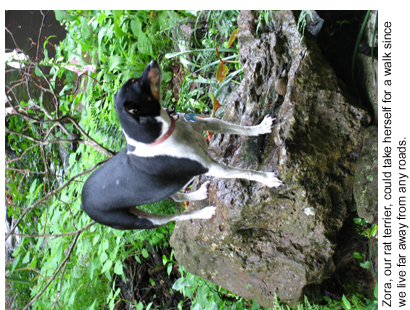 Maintaining life involves much more than socializing the next generation and women do much of this maintenance work too, even in the global North. You don’t have to have children to play a central role in running a household. For example, do you cook meals? Clean your house? Care for other members of your household when they are sick? Walk the dog? Do yard work? Sew buttons back on your clothes when they fall off? Keeping a household going can involve seemingly endless work and women do much of it! This is true even in households that have many modern “conveniences.”
Maintaining life involves much more than socializing the next generation and women do much of this maintenance work too, even in the global North. You don’t have to have children to play a central role in running a household. For example, do you cook meals? Clean your house? Care for other members of your household when they are sick? Walk the dog? Do yard work? Sew buttons back on your clothes when they fall off? Keeping a household going can involve seemingly endless work and women do much of it! This is true even in households that have many modern “conveniences.”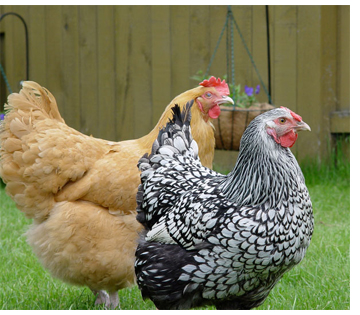 We can’t include anyone’s production work from the capitalist economy (in jobs, as business owners) in these considerations as that work isn’t subsistence work and cuts into time available for subsistence work.
We can’t include anyone’s production work from the capitalist economy (in jobs, as business owners) in these considerations as that work isn’t subsistence work and cuts into time available for subsistence work.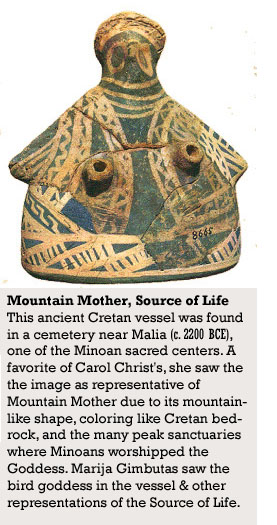
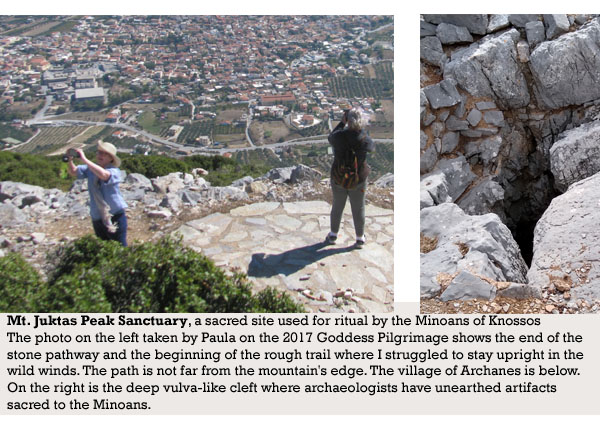
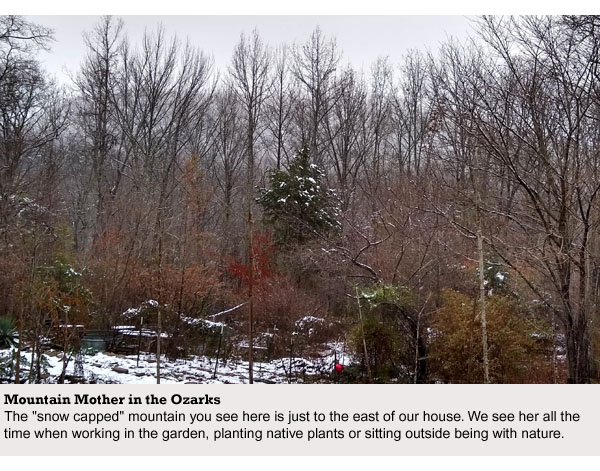
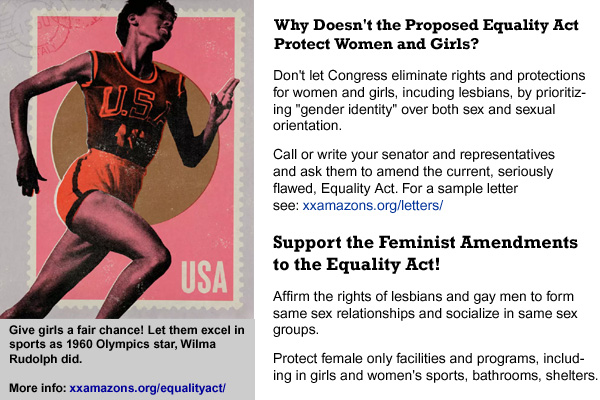
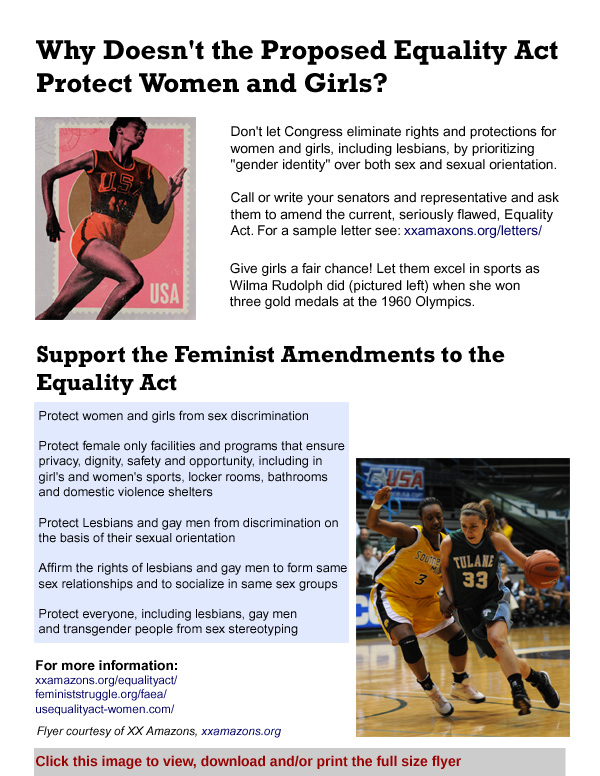
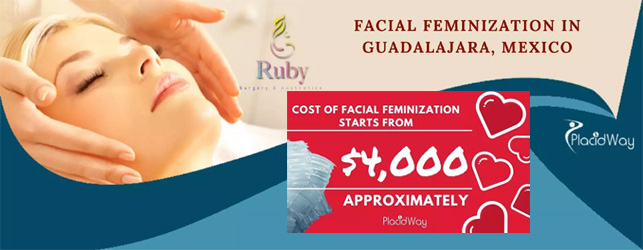

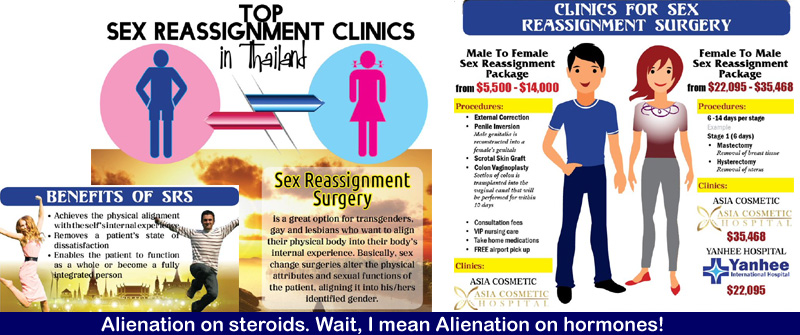

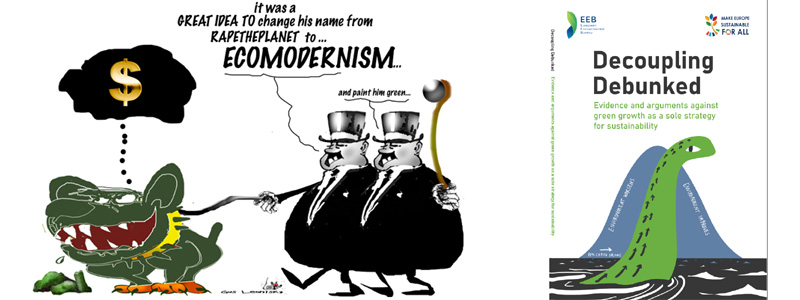

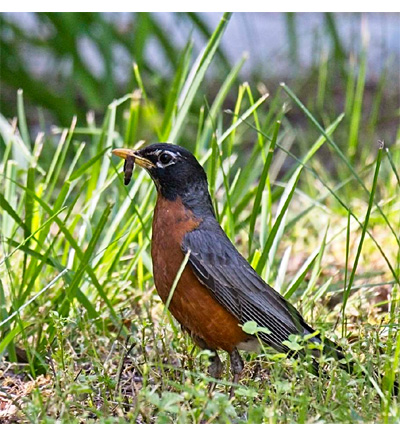
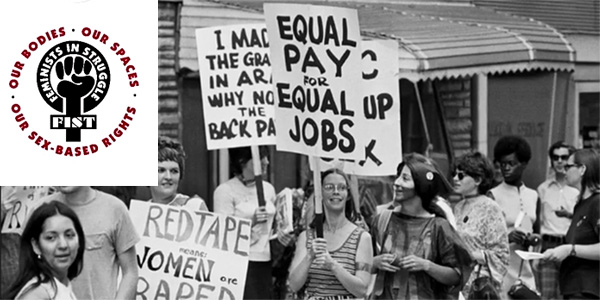
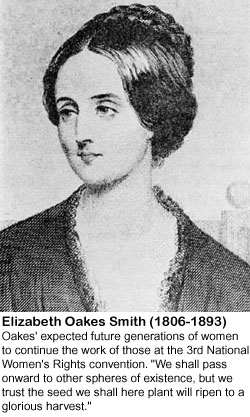 Millions of women have worked over centuries for the “subversion of the present order of society, a dissolution of the whole existing social compact.” We have wrought vast changes to women’s situation in many parts of the world. Yet now the decades long right wing driven backlash has been joined by runaway misogyny on the Internet and in the real world, as well as “transgender” males trying to take on and take over the identity of “woman.” Transactivists want to define real women out of existence and make it impossible for women to meet in public in groups that exclude males. With the misogynist support of many of the Left, transactivists are fighting to end the revolution of women. Women now face backlash from the right and Left!
Millions of women have worked over centuries for the “subversion of the present order of society, a dissolution of the whole existing social compact.” We have wrought vast changes to women’s situation in many parts of the world. Yet now the decades long right wing driven backlash has been joined by runaway misogyny on the Internet and in the real world, as well as “transgender” males trying to take on and take over the identity of “woman.” Transactivists want to define real women out of existence and make it impossible for women to meet in public in groups that exclude males. With the misogynist support of many of the Left, transactivists are fighting to end the revolution of women. Women now face backlash from the right and Left! After reading a recent report about the global state of the natural world, the word “necrophilia” began to haunt me. Defined by Mary Daly as the “hatred for and envy of Life,” Daly considered necrophilia to be the “most fundamental characteristic of patriarchy.” (Wickedary, p. 83 or
After reading a recent report about the global state of the natural world, the word “necrophilia” began to haunt me. Defined by Mary Daly as the “hatred for and envy of Life,” Daly considered necrophilia to be the “most fundamental characteristic of patriarchy.” (Wickedary, p. 83 or 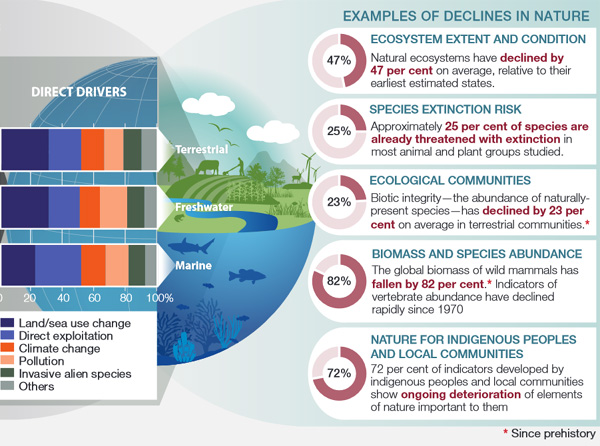
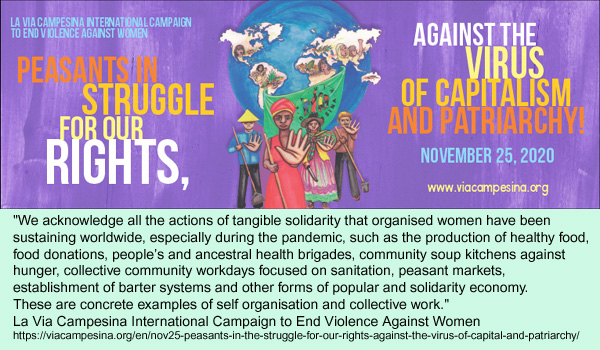
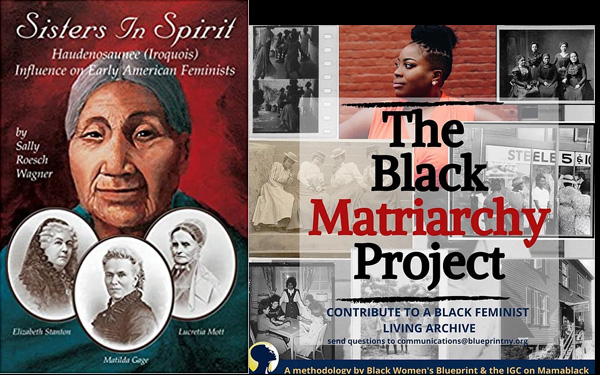
 I tried to take notes on every speaker. The conference was 13 hours long and had 28 speakers, with an occasional video or song between speakers. At times my computer acted up or I had to take a small bathroom or food break and so some things were missed.
I tried to take notes on every speaker. The conference was 13 hours long and had 28 speakers, with an occasional video or song between speakers. At times my computer acted up or I had to take a small bathroom or food break and so some things were missed.  2. Sasha Ayad, a therapist for teens and their families specializing in ROGD (
2. Sasha Ayad, a therapist for teens and their families specializing in ROGD ( Jennifer Bilek spoke of the colonizing and commodifying of women. Sex trafficking, prostitution and porn are major players to promote fetishes.
Jennifer Bilek spoke of the colonizing and commodifying of women. Sex trafficking, prostitution and porn are major players to promote fetishes.  5. Kara Dansky, lawyer for
5. Kara Dansky, lawyer for  8. Catherine Crouch, lesbian filmmaker. In 2007, Ms. Crouch made a movie called “
8. Catherine Crouch, lesbian filmmaker. In 2007, Ms. Crouch made a movie called “ 9.
9.  11.
11. 
 19. Beth Stelzer and Linda Blade,
19. Beth Stelzer and Linda Blade,  23. Sherri Golden,
23. Sherri Golden,  26.
26.